The little town of Valley, Washington was established in 1882 and doesn’t seem to have changed much since then. According to Wikipedia, the town was named by Daniel C. Corbin based on its location “at the entrance to the Colville Valley. The Spokane Falls and Northern Railroad was connected to Valley in 1889,” and “Corbin set up a small building for a depot.” The railroad crossing is the main intersection in the town today.
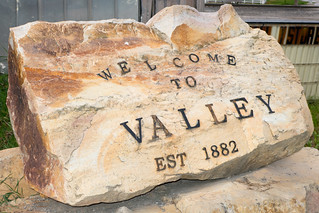
Downtown consists of a post office, general store, bar, part-time restaurant, mini-storage, railroad crossing, and a gas station. The store was originally built in 1889, burned down, and was rebuilt in 1908, still standing and in use. Some civic-minded property owner has established a private park around a retired railroad car, with a little ramada and picnic tables where Mennonite women occasionally sell delicious cinnamon buns and bread.
There is a Catholic church, plus some sort of non-denominational one that has been under construction for quite a while. Residents of the graveyard at the edge of town enjoy a stunning view of the surrounding hills. Perhaps forty squarish old houses cluster around Highway 231 and the couple of cross streets, tucked in behind leafy mature trees. The elementary school serves Kindergarten through eighth grade, a bright and clean new building full of dedicated teachers and staff.
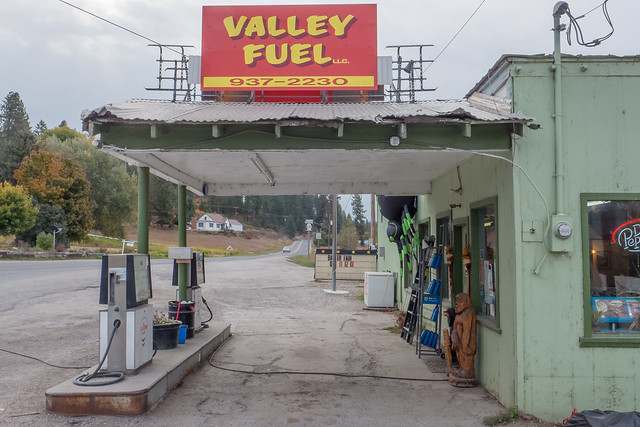
The town has a dignified if impoverished vintage to it. I suspect much of the modest funds being spent there arrive at the post office via U.S. government checks, despite the stolid political conservatism of this part of Washington State. The only industry seems to be a silica processing plant that grinds away by its railroad depot night and day, plus the loggers and farmers living in the surrounding lightly populated acreage of Stevens County.
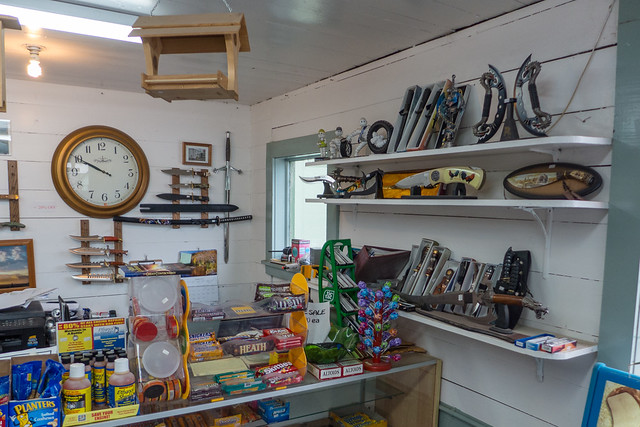
The gas station, Valley Fuel L.L.C., brings petroleum to those farmers and sells it from 23 year-old pumps to people driving through town. You drive over the air hose and hear the ding-ding of the bell alerting one of the owners of the place to your arrival. The previous owner would sit behind his long counter stocked with candy bars and gas treatment while you pumped and then dutifully walked in to report the amount, but now it’s full service only.
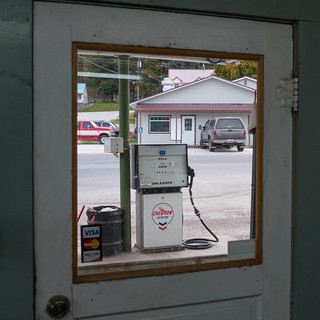
Either John or Rita Morris—owners for the past five years—will emerge from behind the counter, greet you, and fill your tank. The all-too-modern concern about drive-offs (and perhaps just a desire to connect with customers) has resulted in a return to old times, to a memory I have from early childhood.
I’d be sitting next to my dad on a long bench seat, probably unbelted, as the attendant leaned into the window, greasy rag in hand, and dad said, “Fill ’er up, regular.” When John is on duty, you’re more likely to see a driver standing outside his truck chatting with John as the pump clicks away.
There are no card readers on these delightful old machines, no obtrusive video screens blaring advertising at you, no automated inquiries about car washes and zip codes. Just a long metal lever that starts things off with a resounding thunk and mechanical dials that spin up, fast on the right, slower as you go left, as the gas rushes into your tank. Squeezing off the last drop as the digits approach an even twenty dollar bill is still an art form here.
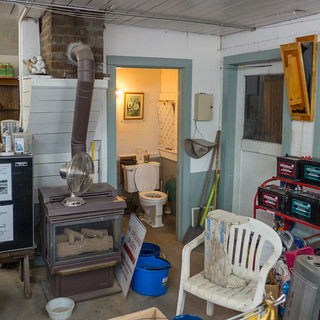
The profit margin from selling a gas at the pump isn’t that great. A pretty small fraction of the total you pay goes to the station owner, as a CNN story from 2008 explains: “The reality is that profit margins at the gas pump stay at around 23 cents a gallon, regardless of the price per gallon.” John cited a somewhat lower figure and said the percentage is pretty much what it was years ago when prices were much lower.
Rita said much of their revenue comes from fuel deliveries and tire sales, and pointed out that there is stiff competition from the Indian reservation a few miles up Highway 231. Exemption from taxes means lower pump prices. Maybe so, but I’ll take the Morris’s charming old equipment and their personal touch over the gaudy video-in-your-face pumps on the reservation any day.

Valley Fuel (slogan on their business card: “We’ve got gas”) occupies a building that is not much newer than the town itself, built in the 1930s. John said they try to preserve the old look of the place, and it really surrounds you when you walk in. It’s not dirty, just timeworn and a bit haphazard. For example, when they needed a new fan, they picked out one that looked old-fashioned and would fit in better. You won’t slice off any fingers with it like the old ones, though.
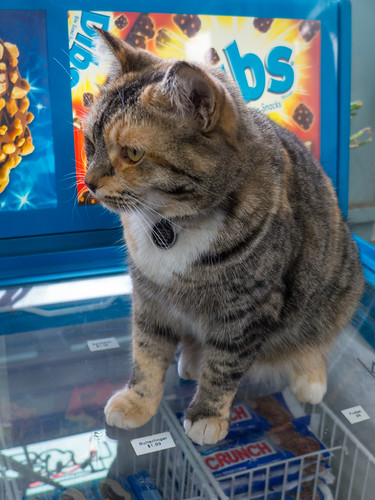
The place is presided over by Molly the Mouser. She’s an agreeable cat, and seems very confident about her position. After I paid an inordinate amount of attention to her (I love cats), she started play-fighting with my hand. The Morris’s asked me to cool it, as they want Molly to stay docile so she can be around the kids that come in. Makes sense to me, especially when kids are likely to spot the cooler full of frozen treats that is one of Molly’s perches. I wonder if her paws get cold.
These kinds of places are what America used to be all about, at least on the retail level. (Of course, Standard Oil was not exactly a little Mom & Pop operation content with modest aspirations.) Before soulless mega-corporations metastasized our towns into monotonous patterns of mass-produced plastic signage and halogen lighting, there were real owners, entrepeneurs, and unique ideas behind the storefronts.
John and Rita don’t answer to some francise licensing authority. They don’t go through the robotic motions of posting factory-produced signs to promote the brand of some distant corporation that couldn’t care less about them or their little town. And they don’t try to sell you car washes or sign you up for a “loyalty” card. They sell gas, and tires, and candy bars, and you’ll probably get a nice little conversation about the weather in the process.